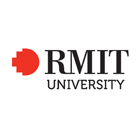Master of Design (Architecture and Design)
Master of Design (Architecture and Design)
At RMIT we contend that research is conducted through designing and that the process of designing, as a means of increasing knowledge, parallels research in other areas in fascinating ways. Research candidates are supported and engaged in communities of design practice where learning is fundamentally a social phenomenon; where knowledge…
Categories
COURSE DESCRIPTION
At RMIT we contend that research is conducted through designing and that the process of designing, as a means of increasing knowledge, parallels research in other areas in fascinating ways.
Research candidates are supported and engaged in communities of design practice where learning is fundamentally a social phenomenon; where knowledge is integrated in the life of these communities that share interests, discourses and ways of doing things.
The Master of Design may be undertaken in a project or thesis mode. This decision is made in consultation with your supervisor.
On completion of this program you will have:
a body of knowledge that includes the understanding of recent developments in 1 or more disciplines
advanced knowledge of research principles and methods applicable to the field of work or learning
cognitive skills to demonstrate mastery of theoretical knowledge and to reflect critically on theory and its application
cognitive, technical and creative skills to:
investigate, analyse and synthesise complex information, problems, concepts and theories and to apply established theories to different bodies of knowledge or practice
generate and evaluate complex ideas and concepts at an abstract level
use and evaluate research and research methods.
communication and technical skills to present coherent and sustained argument and to disseminate research results to specialist and non-specialist audiences
technical and communication skills to design, evaluate, implement, analyse, theorise and disseminate research that makes a contribution to knowledge and/or professional practice.
As a graduate you will demonstrate the application of these knowledge and skills:
with creativity and initiative to new situations and/or for further learning
with high-level personal autonomy and accountability
to plan and execute a substantial piece of research.
Career
This program will provide you with a foundation for further studies at PhD level and for employment in senior leadership and management research-based positions in a variety of government, non-government and corporate environments.
Pathways
You can gain entry to this program from a range of RMIT four year Bachelor and Honours degrees or Postgraduate programs.
Further study
If you excel in your master degree by research, you can continue your research in a doctorate (PhD). This involves four years of research under the supervision of a senior researcher.
EDUCATIONAL INSTITUTION
Since its establishment in 1887, Royal Melbourne Institute of Technology University (RMIT) has been meeting the needs of the community surrounding it. Originally a Working Men’s College, RMIT showed its flexibility during World War Two, training over 20,000 servicemen in communications to help with the war effort.Now, it is a true pioneer in international education, championing cross-border study opportunities with campuses in various countries. Granted formal university status in 1992, RMIT is ranked 21st in the world for universities that are less than 50 years old.RMIT is the largest higher education institution in Australia, currently with more than 82,000 students. With nearly 20% of those students coming from overseas, it is a university that truly welcomes diversity and is a melting pot of different cultures. RMIT has three campuses in Vietnam, a European hub in Barcelona, an office in Indonesia, and partners with 200+ institutions in 42 countries to provide study opportunities worldwide.




